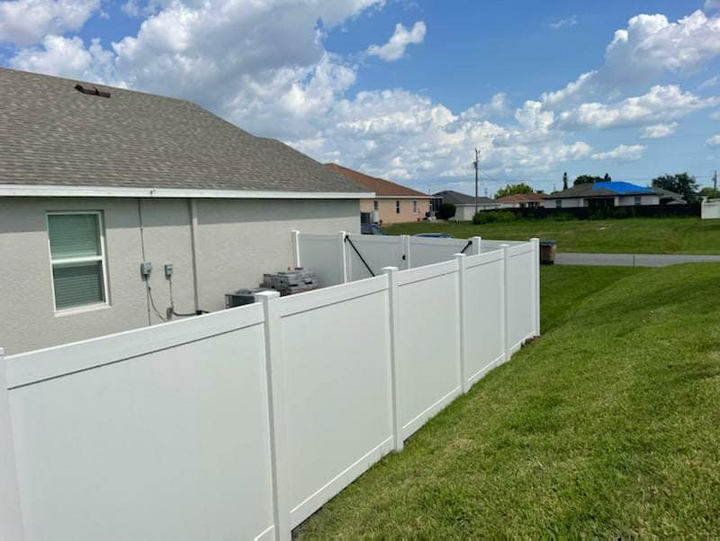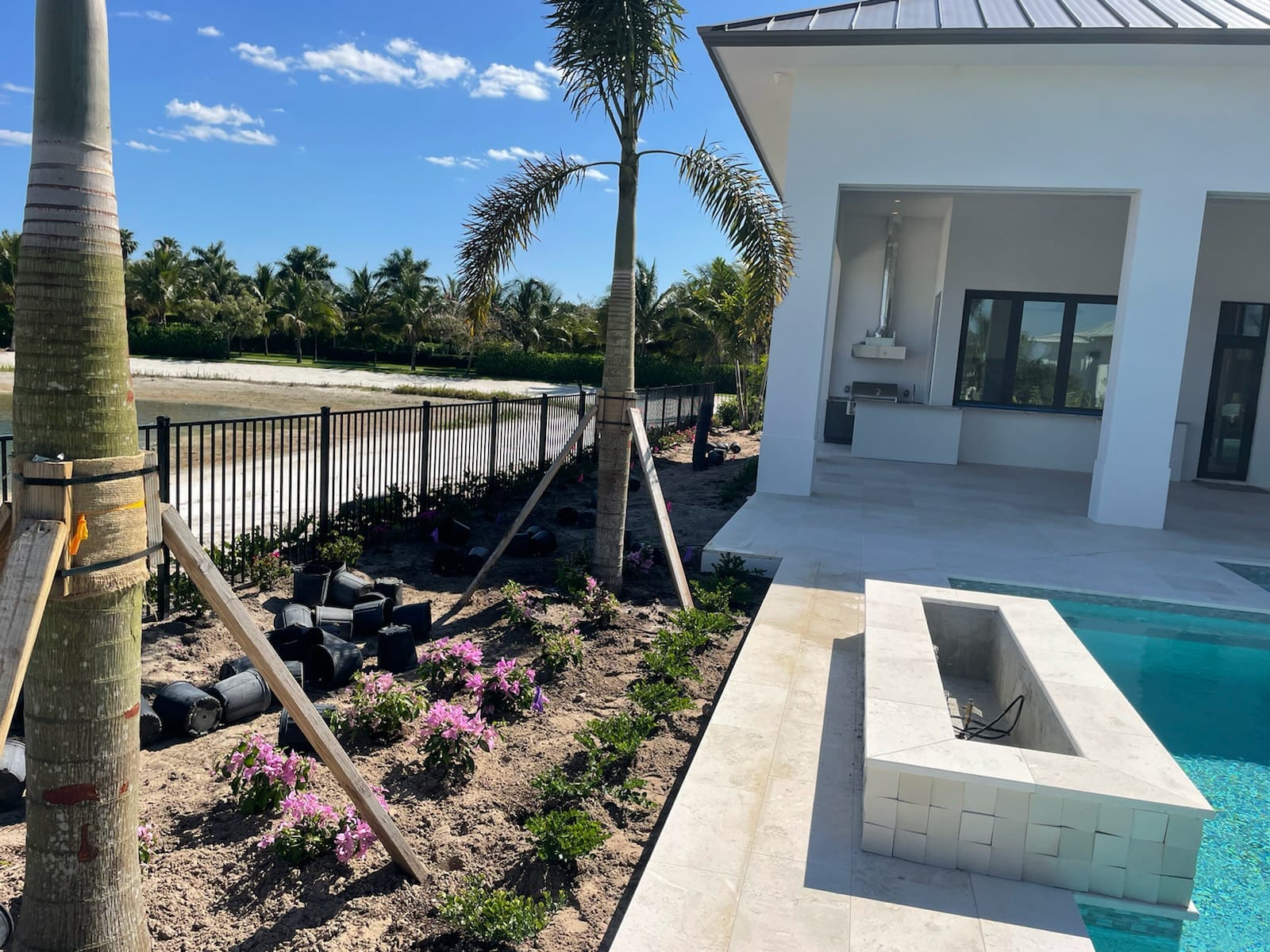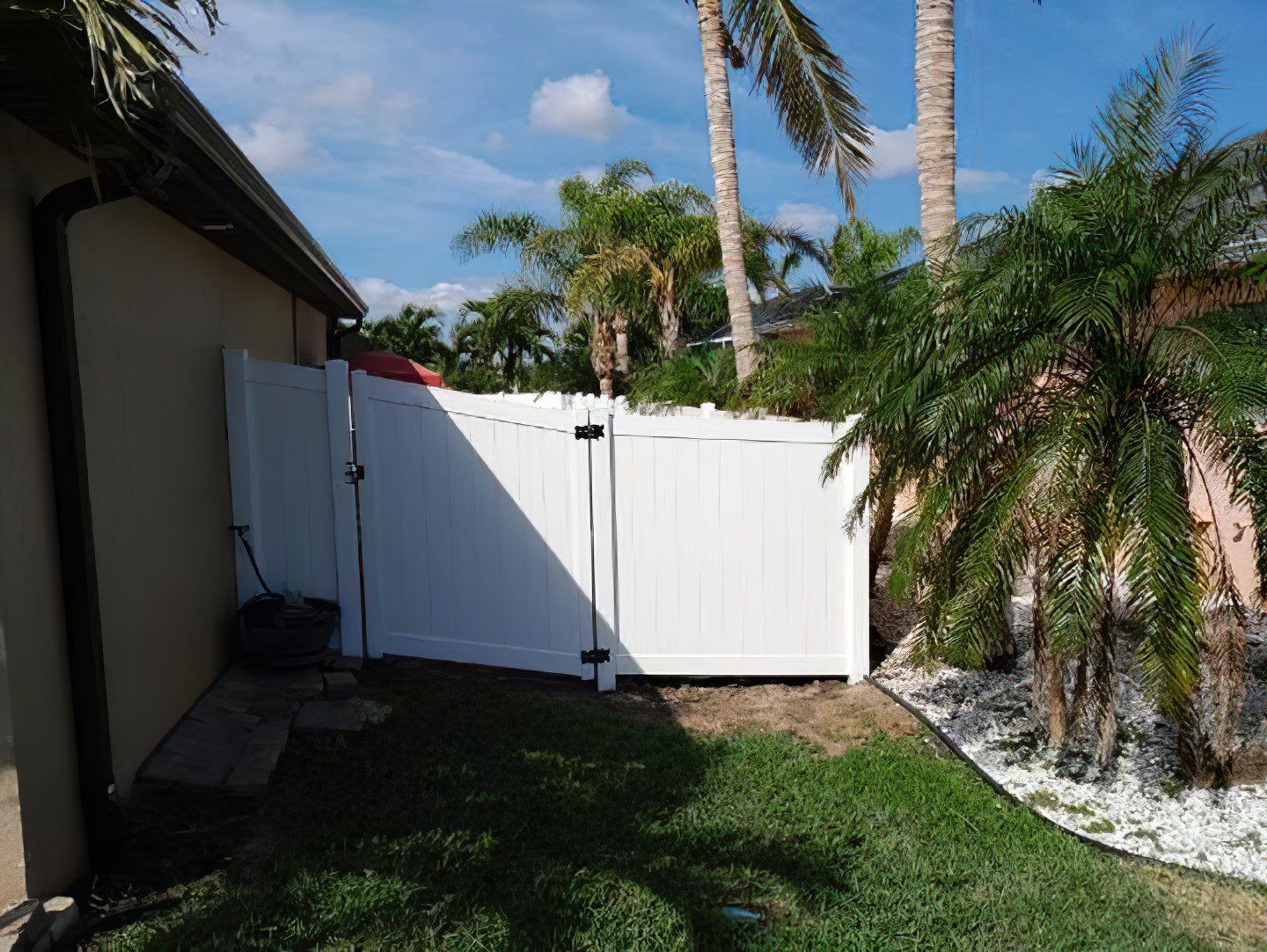Garden fencing is pivotal in yard design, serving practical and aesthetic purposes. It defines property…

Installation Insights: Vinyl vs. Wood Fence Setup
As a homeowner, one of the key decisions you’ll face is choosing the right fence for your property. A well-installed fence enhances curb appeal and provides security, privacy, and a clear boundary. In this article, we’ll dive into the nitty-gritty of fence installation, specifically comparing the processes and considerations for vinyl and wood fencing.
Pre-Installation Preparations
Before you pick up a single tool, laying the groundwork for a successful fence installation is essential. It starts with clearing the designated area. Remove any obstacles, debris, or overgrown vegetation to ensure a clean workspace. Accurate measurements and markings are the next crucial step. Precise placement and alignment of your fence posts depend on this careful planning. Additionally, it’s crucial to investigate local regulations—zoning requirements or permit applications may be necessary before you break ground.
Vinyl Fence Installation Process
Transitioning from pre-installation preparations, let’s delve into installing a vinyl fence, where efficiency and ease take center stage.
Setting Up Corner and End Posts
Vinyl fence installation often begins with securing corner and end posts. These serve as the foundation for your fence and must be properly positioned and leveled.
Slotting in Vinyl Panels and Attaching Rails
The vinyl panels, known for their durability and low maintenance, easily slide into the designated slots on the posts. Horizontal rails are then attached, providing structural integrity to the fence.
Securing the Fence with Brackets and Screws
Brackets and screws hold the panels in place to ensure a sturdy and secure installation. This step simplifies the process and contributes to the relatively speedy vinyl fencing installation.
Vinyl fencing offers advantages in terms of ease and speed. Its modular design, and lightweight material make it popular for homeowners seeking a hassle-free installation process.
Wood Fence Installation Process
Shifting our focus to wood fencing, we’ll guide you through the intricacies of its installation process, where attention to detail and customization possibilities come to the forefront.
Setting and Aligning the Posts
Wood fence installation begins with carefully positioning and aligning the fence posts. Proper spacing and alignment play a crucial role in the overall stability of the fence.
Attaching Horizontal Rails and Securing Them
Once the posts are set, horizontal rails are attached to support the vertical pickets or panels. The rails need to be securely fastened to ensure the strength and longevity of the fence.
Nailing or Screwing on Vertical Pickets or Panels
The final step involves attaching the vertical pickets or panels to the horizontal rails. Nails or screws are used to affix the wood components, creating the characteristic look of a wood fence.
Wood fencing offers a classic aesthetic and customization options. While the installation process may take slightly longer due to the need for precise measurements and alignment, the result can be a charming and timeless addition to your property.
Tools and Equipment
Both vinyl and wood fence installations require common tools, including a level, measuring tape, a post-hole digger, and a shovel. However, specialized tools come into play as well. Vinyl cutters are essential for clean and precise cuts in vinyl panels, while wood installations may necessitate tools like a circular saw for cutting rails and pickets.
Factors Influencing Installation Difficulty
Various factors can impact the difficulty of fence installation, regardless of the material. Your area’s soil type, terrain, and weather conditions can pose challenges. Additionally, the level of expertise needed can vary—while vinyl installation leans towards being more straightforward, wood installation demands meticulous attention to detail.
Time and Labor Comparison
The time required for fence installation can differ between vinyl and wood. Vinyl fencing’s modular design and easy attachment system contribute to a quicker setup than the more intricate process of aligning and securing wood components. The complexity of wood installation may lead to longer project timelines, potentially requiring more labor.
Long-Term Considerations
When evaluating fence materials, long-term maintenance is a crucial aspect. Vinyl fences require minimal maintenance, often limited to occasional cleaning. On the other hand, wood fences demand more attention, including painting, staining, sealing, and potential repairs over time.
Cost Comparison
The initial costs of vinyl and wood fence installations vary based on material quality and labor expenses. Vinyl fences may have slightly higher upfront costs due to the cost of materials and the ease of installation. Wood fences, while potentially more affordable initially, can accrue additional costs over time due to maintenance needs.
FAQ: Your Fence Installation Queries Answered
Got questions about vinyl and wood fence installation? We’ve got you covered with answers to some common queries:
1. Which material is easier for a DIY installation?
Vinyl fences often have a simpler installation process due to their modular design and easy attachment mechanisms. If you’re looking for a DIY-friendly option, vinyl might be the way.
2. Can I install a wood fence on uneven terrain?
Yes, wood fences can be installed on uneven terrain. However, it may require more effort to ensure proper alignment and stability, as the posts need to be adjusted to accommodate the varying heights.
3. Do I need to hire a professional for fence installation?
While vinyl and wood fences can be installed as DIY projects, hiring a professional can ensure precise alignment, stability, and a polished finish. If you need more confidence in your DIY skills, seeking professional assistance might be wise.
4. How long does installing a vinyl fence take?
The vinyl fence installation relates to aspects such as the length of the fence, the number of posts, and the terrain. It might take a fraction of the time compared to a wood fence.
5. What type of maintenance does a wood fence require?
Wood fences typically require more maintenance than vinyl fences. Regular painting, staining, and sealing are necessary to protect the wood from weathering and ensure its longevity.
6. Can I customize the design of both vinyl and wood fences?
Yes, both materials offer customization options. Vinyl fences come in various styles and colors, while wood fences can be stained or painted to achieve the desired look.
7. Are there eco-friendly options for either material?
Wood is a natural and renewable resource, making it a more eco-friendly option. However, vinyl fences are often made from recyclable materials and can have a longer lifespan, potentially offsetting their environmental impact.
8. How do I determine the right fence height for my property?
The fence height you choose depends on your privacy needs, local regulations, and aesthetic preferences. Check your local zoning codes for any height restrictions before making a decision.
9. Which material is more cost-effective in the long run?
While vinyl fences may have higher initial costs, their minimal maintenance requirements can lead to cost savings over time. Wood fences might have lower upfront costs but can accrue maintenance expenses over the years.
With these answers in mind, you’re better equipped to embark on your fence installation journey, whether leaning toward vinyl’s modern simplicity or wood’s timeless charm. Remember, choosing the right material and installation approach will ultimately depend on your preferences, budget, and property’s unique characteristics.
Conclusion
The installation is pivotal in the ongoing vinyl vs. wood fencing debate. Both materials have unique strengths and considerations, and your choice should align with your preferences, budget, and long-term commitment to maintenance. By understanding the installation processes and factors influencing them, you’re better equipped to make an informed decision that suits your property and lifestyle.
Ready to explore more about fence installation and other home improvement topics? Check out our other articles for valuable insights and tips. Share your thoughts or questions in the comments below—we’re here to help you make the best choices for your home!





